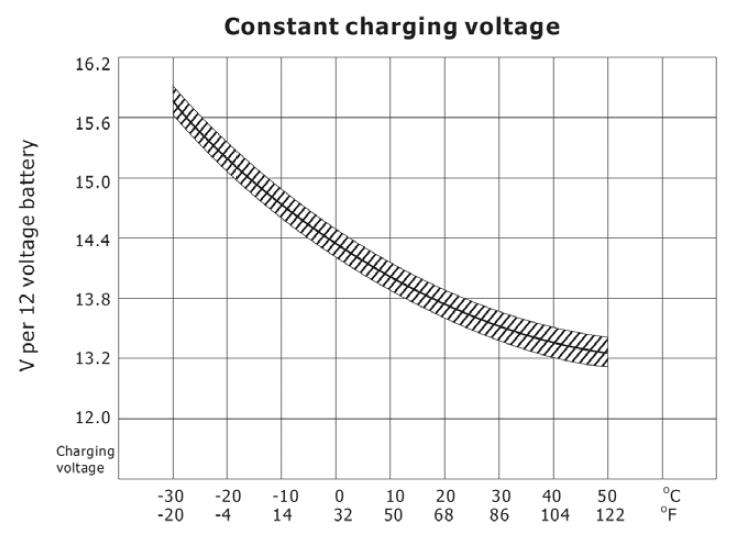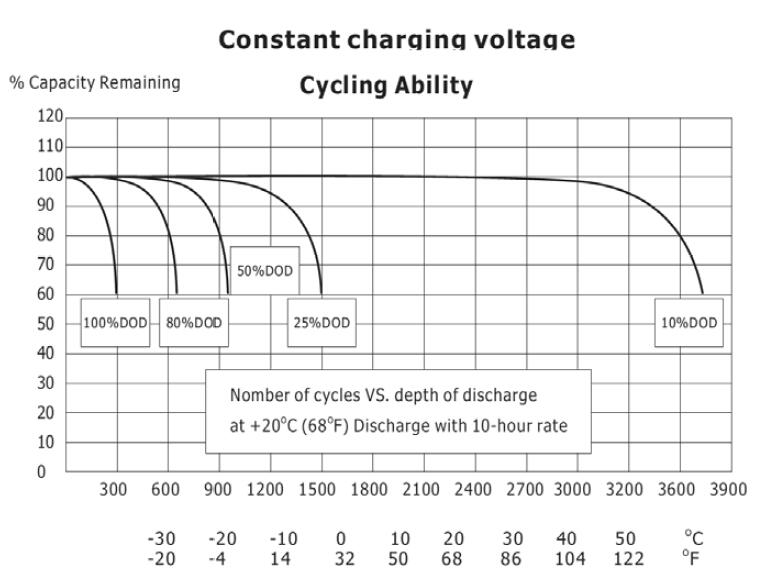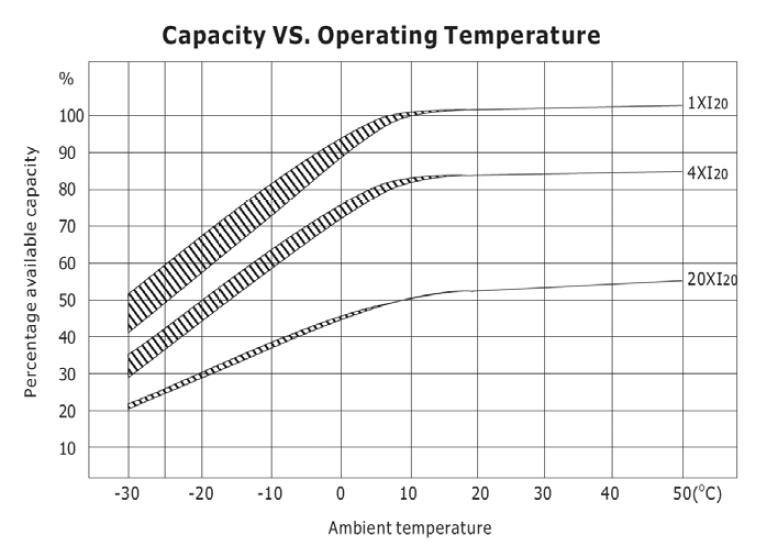|
1. IntroductionThe Weida gel battery uses the sealed geltechnology and is designed for high reliable, maintenance-free power forrenewable energy applications. Depending on the advantage gel technology,optimum grid and plate design, the WEIDA gel battery offers highest power andreliability for your equipments. 2. Features & Benefits
3. Applications
4. ChargingWhile the Weida gel battery will accept acharge extremely well due to its low internal resistance. For
using the sealed design, over-chargingwill dry out the electrolyte by
driving the oxygen and hydrogen out of thebattery through the safety
valves. Capacity is reduced and life is shortened Ifa battery is
continually under-charged, So what is important for gel battery thatis: charge at least 2.30V/Cell but no more than 2.35V/Cell at
Constant charging voltage: Shown is theconstant charging voltage in relation to the ambient temperature. The bandwidthshows a tolerance of ±30mV/Cell. This constant voltage is suitable forcontinuing charging and cyclic operation. In a parallel standby mode it always keeps battery in a fully charged state; in a cyclic mode, it provide for arapidly recharging and highly cyclic performance. 5. Discharge & cycling abilityBattery discharge capacity and cycle lifeare depended on the depth of discharge (DOD), and the ambient temperature. Weida gel battery is designed to the"acid limited." This means that the power in the acid is used beforethe power in the plates. This design prevents the plates from ultra-deepdischarges. Ultra-deep discharging is what causes life-shorting plates sheddingand accelerates positive grid corrosion which destroy a battery. Capacity vs. operating temperatures: shown are the changes in capacity for a wider ambient temperature range, giving theavailable capacity, as a percentage of the rated capacity, at different ambienttemperatures, for 3 different load examples, with uninterrupted discharge tothe appropriate discharge cut-off voltage.
The values for the upper edge of thecurves were obtained from charging at an ambient temperature of +20℃ with a voltage limit to 2.30V/Cell. For the lower edge,charging was carried out at the specified ambient temperature. The curves showthe behavior of battery after a number of cycles. |







